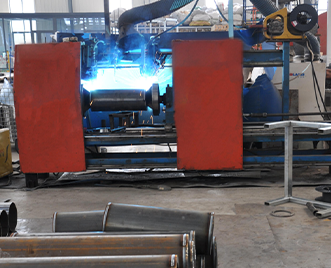Nov . 27, 2024 03:11 Back to list
Design and Functionality of Submersible Pump Supports and Stands
Understanding Submersible Pump Stands A Comprehensive Overview
Submersible pumps have revolutionized the way we manage water across various sectors, including agriculture, construction, and municipal water systems. However, their functionality heavily relies not only on the pump itself but also on the infrastructure that supports it. One crucial component of this infrastructure is the submersible pump stand. In this article, we will delve into the purpose, design, materials, and importance of submersible pump stands.
What is a Submersible Pump Stand?
A submersible pump stand is a structural support system designed to hold submersible pumps in place while they operate effectively underwater. These stands ensure that pumps are correctly positioned at the required depth, facilitating optimal water intake and preventing air lock phenomena. Typically found in applications like shallow wells, sumps, and wastewater management systems, pump stands serve as the initial point of engagement for the pump and provide stability during operation.
Purpose and Functionality
The primary purpose of a submersible pump stand is to maintain the pump's position submerged within a liquid, such as water or sewage
. This positioning is crucial for several reasons1. Effective Pumping By ensuring that the pump is submerged, the stand prevents the introduction of air into the pumping system, which can hinder performance and potentially damage the pump.
2. Protection from Debris A well-designed stand elevates the pump off the bottom, protecting it from sediment, debris, and other materials that may clog or damage the pump.
3. Accessibility Properly designed stands allow for easier maintenance and replacement cycles. They enable technicians to access the pump without extensive deconstruction of the surrounding environment.
4. Safety By ensuring that the pump is anchored securely, the stand minimizes the risk of the pump moving or swaying during operation, which can lead to malfunctions or accidents.
submersible pump stand

Design Considerations
Designing an effective pump stand involves various considerations. Firstly, the material used for the stand must be resistant to corrosion, especially if the pump will be submerged in corrosive fluids. Common materials include stainless steel, galvanized steel, or high-density polyethylene (HDPE).
Secondly, the stand's dimensions must be tailored to the specific pump model, considering both the weight of the pump and the volume of liquid it is designed to handle. The height of the stand should allow the pump to operate efficiently while remaining above the sediment and debris on the bottom.
Additionally, incorporating a base with adequate support is fundamental to prevent tipping or sliding. Some designs include adjustable feet, allowing customization based on the installation environment, whether it’s a well, sump pit, or other water sources.
Importance in Various Applications
Submersible pump stands are essential across a wide range of applications. In residential areas, they play a critical role in managing groundwater levels and ensuring that homes remain dry during periods of heavy rainfall. In agriculture, farmers rely on these stands to facilitate irrigation processes, drawing water efficiently from aquifers.
In municipal water systems, pump stands can be integrated into larger water management infrastructures, ensuring that water is pumped effectively from treatment facilities to distribution networks. In wastewater management, they help in handling effluents safely, protecting both the environment and public health.
Conclusion
The significance of submersible pump stands cannot be overstated. They serve as the backbone of the submersible pump system, ensuring efficiency, safety, and reliability. As technology continues to evolve, the designs of pump stands may also integrate advanced materials and innovative features, but their fundamental purpose remains unchanged. Whether in residential, agricultural, or industrial settings, understanding the role and importance of submersible pump stands is critical for anyone involved in water management and pump operations. The next time you notice a submersible pump in action, take a moment to appreciate the silent but vital role played by its stand.
-
Submersible Water Pump: The Efficient 'Power Pioneer' of the Underwater World
NewsJul.01,2025
-
Submersible Pond Pump: The Hidden Guardian of Water Landscape Ecology
NewsJul.01,2025
-
Stainless Well Pump: A Reliable and Durable Pumping Main Force
NewsJul.01,2025
-
Stainless Steel Submersible Pump: An Efficient and Versatile Tool for Underwater Operations
NewsJul.01,2025
-
Deep Well Submersible Pump: An Efficient 'Sucker' of Groundwater Sources
NewsJul.01,2025
-
Deep Water Well Pump: An Efficient 'Sucker' of Groundwater Sources
NewsJul.01,2025
-
 Submersible Water Pump: The Efficient 'Power Pioneer' of the Underwater WorldIn the field of hydraulic equipment, the Submersible Water Pump has become the core equipment for underwater operations and water resource transportation due to its unique design and excellent performance.Detail
Submersible Water Pump: The Efficient 'Power Pioneer' of the Underwater WorldIn the field of hydraulic equipment, the Submersible Water Pump has become the core equipment for underwater operations and water resource transportation due to its unique design and excellent performance.Detail -
 Submersible Pond Pump: The Hidden Guardian of Water Landscape EcologyIn courtyard landscapes, ecological ponds, and even small-scale water conservancy projects, there is a silent yet indispensable equipment - the Submersible Pond Pump.Detail
Submersible Pond Pump: The Hidden Guardian of Water Landscape EcologyIn courtyard landscapes, ecological ponds, and even small-scale water conservancy projects, there is a silent yet indispensable equipment - the Submersible Pond Pump.Detail -
 Stainless Well Pump: A Reliable and Durable Pumping Main ForceIn the field of water resource transportation, Stainless Well Pump has become the core equipment for various pumping scenarios with its excellent performance and reliable quality.Detail
Stainless Well Pump: A Reliable and Durable Pumping Main ForceIn the field of water resource transportation, Stainless Well Pump has become the core equipment for various pumping scenarios with its excellent performance and reliable quality.Detail
